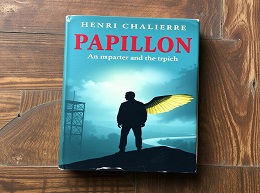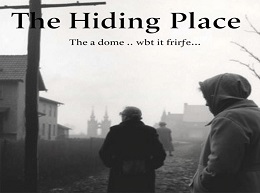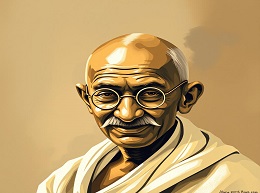Papillon

Review of "Papillon": A Journey Through Despair and Triumph
Henri Charrière's "Papillon" is a timeless classic, often celebrated as one of the greatest escape narratives ever told. First published in 1969, the book has captivated readers with its vivid portrayal of human endurance against insurmountable odds. This detailed review aims to delve into the heart of Charrière’s tale, examining its compelling narrative, the psychological depth of its characters, and the brutal reality of the penal system in French Guiana. Let’s explore why "Papillon" continues to resonate with audiences worldwide.
The Premise: A Fight for Freedom
"Papillon" begins with Henri Charrière's arrest in Paris in 1931, falsely accused of murder. The story takes us through his harrowing experiences in the French penal system, particularly in the hellish confines of the penal colony in French Guiana. The name "Papillon," French for "butterfly," is a metaphor for Charrière’s aspiration for freedom and transformation. The book’s strength lies in its authentic depiction of the struggles faced by prisoners in one of the most notorious penal colonies in history.
Characters: Depth and Complexity
One of the most compelling aspects of "Papillon" is its richly drawn characters. Henri Charrière, the protagonist, emerges as a symbol of indomitable spirit and resilience. His transformation from a defeated prisoner to a determined escape artist is both inspiring and heart-wrenching. Charrière's relationships with fellow inmates, notably Louis Dega, his loyal companion, add layers of depth to the narrative.
Louis Dega, a forger and thief, is initially seen as a burden but gradually becomes Charrière’s indispensable ally. Their bond, built on mutual trust and survival, is beautifully portrayed. Dega’s character is a testament to the idea that strength can also be found in vulnerability. His unwavering support and cleverness in securing supplies for their escapes illustrate the theme of solidarity in adversity.
Setting: The Torturous Penal Colony
The setting of French Guiana’s penal colony is more than just a backdrop; it is a character in its own right. Charrière’s vivid descriptions of the landscape dense jungles, treacherous rivers, and the oppressive heat create a palpable sense of dread and isolation. The inhumane conditions of the colony, with its harsh labor, brutal guards, and rampant diseases, serve as a constant reminder of the prisoners' struggle for survival.
The description of the brutal punishments, the ever-present threat of death, and the relentless mosquito bites paint a haunting picture of life in the penal colony. Charrière’s detailed account of his physical and mental battles against these relentless adversities is both gripping and disturbing.
Themes: Freedom, Survival, and Redemption
"Papillon" is not just a story of escape; it is a profound exploration of freedom, survival, and human spirit. The theme of freedom is intricately woven throughout the narrative. Charrière’s relentless quest to break free from the clutches of the penal system symbolizes the universal desire for liberty and self-determination. His journey is a testament to the power of hope and the human spirit’s resilience.
Survival is another central theme, vividly depicted through the harsh realities faced by Charrière and his fellow prisoners. The book showcases the various ways individuals cope with their dire circumstances, from cunning plans to sheer willpower. Charrière’s ingenuity and tenacity in devising multiple escape plans highlight the lengths to which one can go in the pursuit of freedom.
Redemption, too, plays a crucial role in the story. Charrière’s journey is not just a physical escape but also a spiritual one. His reflections on his past life, his relationships, and his evolving sense of self add a layer of introspection to the narrative. The book ultimately portrays redemption as a complex, multifaceted process, marked by moments of doubt, guilt, and profound realization.
Notable Escapes: Ingenious and Thrilling
One of the most thrilling aspects of "Papillon" is Charrière’s ingenious escape attempts. Each escape plan is meticulously detailed, showcasing Charrière’s resourcefulness and determination. For instance, his first escape attempt, which involves a daring swim through the shark-infested waters, is both audacious and terrifying. The sheer audacity of his plans, coupled with the constant threat of recapture, keeps readers on the edge of their seats.
The escape from Devil’s Island, with its perilous journey across the ocean in a small, makeshift boat, is a standout moment. This harrowing voyage is a testament to Charrière’s indomitable will and the sheer improbability of his survival. The tension and drama of these escape attempts are masterfully captured, making "Papillon" an exhilarating read from start to finish.
Legacy and Impact
Since its publication, "Papillon" has left an indelible mark on literature and popular culture. The book’s vivid storytelling and powerful themes have inspired countless readers, filmmakers, and artists. The 1973 film adaptation, starring Steve McQueen and Dustin Hoffman, brought Charrière’s story to a wider audience, further cementing its place in popular culture.
The impact of "Papillon" extends beyond its literary merit. It serves as a powerful reminder of the resilience of the human spirit and the enduring quest for freedom. Charrière’s story continues to inspire individuals around the world to confront their own challenges with courage and determination.
A Timeless Tale of Hope and Courage
"Papillon" is more than just a book; it is a powerful exploration of the human condition. Henri Charrière’s story of survival, resilience, and hope continues to resonate with readers across generations. The book’s rich characters, compelling narrative, and profound themes make it a timeless classic that challenges us to reflect on our own lives and the enduring quest for freedom and dignity.
Whether you are drawn to stories of adventure, human psychology, or simply the indomitable spirit of survival, "Papillon" is a must-read. It is a testament to the fact that even in the darkest of times, hope and human spirit can prevail.
Henri Charrière’s "Papillon" remains a compelling read, offering a poignant reminder of the enduring human spirit. Its detailed depiction of survival, friendship, and the relentless pursuit of freedom continues to inspire and captivate audiences worldwide.













